Stars of Spring 2003Eight plants came up tops in this year's Stars of Spring Each year a range of plants are put to the test in Auckland and Christchurch, their habits observed for superior growth. They are judged by a panel of plant experts for innovation, excitement and strong performance. The following eight passed the test and can be confidently referred to as the Stars of Spring 2003. Heuchera 'Magic Wand' Magic Wand is an extremely versatile perennial that will grow well throughout New Zealand. It is a newly bred variety of Heuchera which introduces outstanding flowering features. Flower stems easily reach 70 cm in height, coming from a rosette of thick, round, shiny leaves with crinkly edges. An added bonus is that the long flower stems are ideal for picking. The foliage is healthy, around 20 cm high and 40 cm wide, so the overall effect is very striking, especially as the flowers repeat from spring through to autumn. Although free draining, friable soils are preferred, in a sunny or partially shaded position, they will cope with a wide range of climatic conditions. They dislike full shade, however. It pays to apply some controlled release fertiliser at planting and to keep them well watered through the driest summer weather. Trim stems to tidy the plant up when flowering is completed. Gazania 'Sunset Jane' A beautiful hybrid with a profusion of large fully double flowers that rise on grey stems, set against long, slender green leaves. The masses of flowers are in shades of honey, amber and burnt orange. Their ability to stay open in low light conditions makes them ideal for positions where they are seen both early and late in the day. Sunset Jane has a dense growth habit, is compact and clumps to around 50cm high and a similar spread in its first year. It is excellent for garden borders or as a filler and its low maintenance makes it ideal for containers on a sunny patio or deck. Full sun and a well drained soil are ideal, but it is not a fussy plant and will grow in most soil conditions. It doesnt seem to suffer from any pests or diseases and requires no trimming or pruning. It is exceedingly low maintenance. Campanula 'Mystic Bells' The large intense-blue bell-shaped flowers appear from early spring. They hang in clusters, each flower broadly serrated at the bottom. By campanula standards, the flowers are massive, but the plant itself is small and compact. The foliage is sparse, but with a healthy green, reminiscent of large mint leaves. It grows in full sun but prefers light shade. Protect from the wind for best performance. In trials, plants reached 40 cm in height and a similar width. Easy to grow with good disease resistance, Mystic Bells will thrive with a light cut back after flowering and it will soon repeat flower, going through to early winter in most places. It is advisable to apply a controlled release fertiliser in early spring. Calibrachoa 'Dark Cherry' This delightful new addition to the Sunbells series has a dense, cascading habit. It stays close to the ground and in the garden will block out weed growth. Dark Cherry is covered from spring to autumn (winter in warmer sheltered areas) with masses of rich dark cherry flowers 3cm in diameter. Ideal for hanging baskets, troughs or as a ground cover. In garden trials the plant easily covered 80 cm in diameter in one growing season, being no more than 10 cm in height. Dark Cherry has a high degree of disease resistance and copes well in reasonably neglected situations. However they are high performance plants and will respond well to a cut back after flowering and feeding with a high nitrogen formula during flowering. Grow in a sunny, well drained position, but be prepared to water through the summer to give best results. Dark Cherry is lightly cold hardy and will tolerate only very light frosts. Tetratheca thymifolia 'Bibelles' A free flowering compact shrub that flowers virtually year round, although it has a main flush during spring. The bell-shaped flowers form in nodding bunches and are a rich mauve-pink with dark throats. A low evergreen, it is excellent in rockeries, garden borders and on patios in pots, where its clusters of flowers can be admired. Grows 50 cm high and 60 cm wide. Tolerant of a wide range of growing conditions, full sun to part shade (best to avoid the midday sun during summer), it also tolerates mild frosts. It is advisable to mulch during hot dry weather where cooler root run and lighter free draining soils are preferred. Tiarella 'Crows Feather' This neat, attractive perennial features a unique foliage configuration that will give it broad appeal both in existing gardens and contemporary landscapes. The bright green leaves are triple-lobed in the shape of a crows foot, with an outline of black feathery markings in the centre. It has the added bonus in that during spring it is topped with spikes of showy white flowers, flushed pink. Tiarella 'Crows Feather' grows in most locations across the country, but will do best if given shelter and some very light shade.Grows to 45 cm high and wide. It is a healthy plant that will tolerate a wide range of conditions, including full sun and semi-shade. Little maintenance is required, but as with all foliage plants, a few light feeds with a high nitrogen formula would be beneficial. Lavandula angustifolia 'Thumbelina Leigh' The most striking feature of Thumbelina Leigh is the abundance of bright blue-violet flowers on such a small, tidy plant. The flower heads are tightly balled, rising to about 30cm high, and fragrant. It has the ability to flower twice and its neat, compact shape will make it invaluable for containers, landscaping and as a true small border lavender in the garden. When not in flower the deep green foliage is also fragrant. It prefers hot dry conditions and free draining soils with a pH of 6 to 7. Like most lavenders it does not enjoy wet conditions, although northern trials saw little evidence of ill health in high humidity. In the south it withstood frosty and windy conditions with little or no effect on performance. It pays to prune by half after flowering. Argyranthemum frutescens 'Summit Pink'
|
Home | Journal
| Newsletter | Conferences
Awards | Join
RNZIH | RNZIH Directory | Links
© 2000–2024 Royal New Zealand Institute of Horticulture
Last updated: June 2, 2004


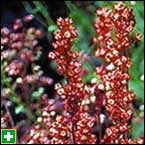
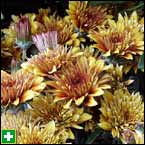
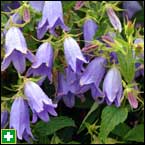
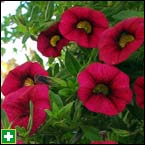
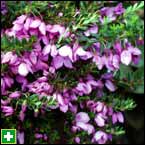
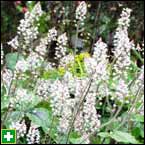
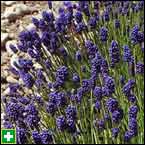
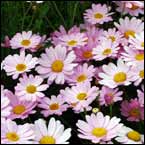 Summit Pink is the most floriferous
Federation Daisy to come out of NuFloras Sydney breeding programme.
It is not only the first marguerite to approach the free-flowering
nature of a garden mum (chrysanthemum), but its petals also have
the same distinctive ribbing. It flowers over an extended period
from late winter into autumn and each new flush of flowers literally
smothers the bush. Flowers are single with strong pink petals and
prominent yellow centres, approximately 4-5 cm in diameter. The
bush grows rapidly, to around 50cm, with finely divided bright green
foliage. Best grown in full sun and a well drained soil, it is very
low maintenance. Feed at the beginning of spring and the odd trim
to shape during the year will keep it tidy and invigorate new foliage
and flowers. There is little need for dead-heading. Will grow well
throughout New Zealand, but is tolerant of only very light frosts
for short periods.
Summit Pink is the most floriferous
Federation Daisy to come out of NuFloras Sydney breeding programme.
It is not only the first marguerite to approach the free-flowering
nature of a garden mum (chrysanthemum), but its petals also have
the same distinctive ribbing. It flowers over an extended period
from late winter into autumn and each new flush of flowers literally
smothers the bush. Flowers are single with strong pink petals and
prominent yellow centres, approximately 4-5 cm in diameter. The
bush grows rapidly, to around 50cm, with finely divided bright green
foliage. Best grown in full sun and a well drained soil, it is very
low maintenance. Feed at the beginning of spring and the odd trim
to shape during the year will keep it tidy and invigorate new foliage
and flowers. There is little need for dead-heading. Will grow well
throughout New Zealand, but is tolerant of only very light frosts
for short periods.